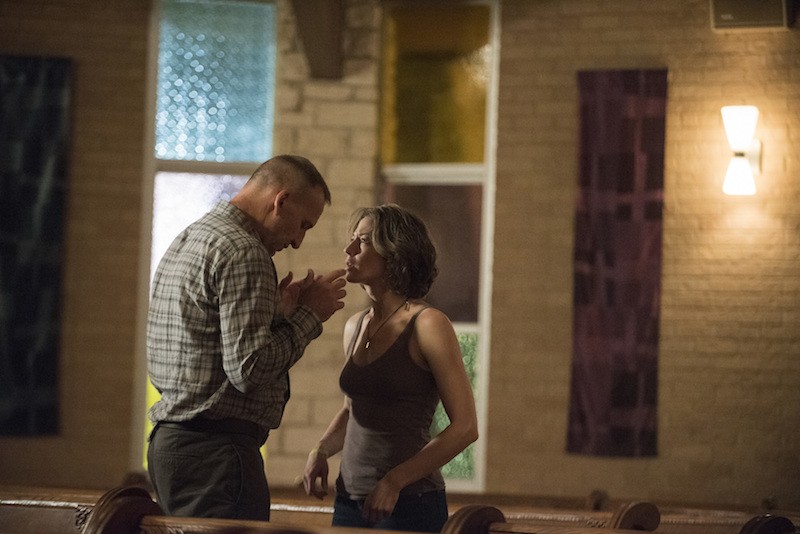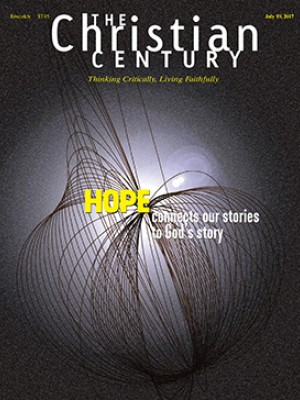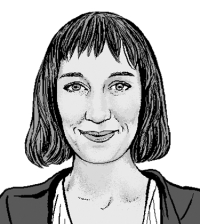The Leftovers and the end of meaning
In three seasons, the show offered many different perspectives on how faith is made, formed, and lost.

Watching the three seasons of the TV series The Leftovers is like taking a short course on William James’s The Varieties of Religious Experience—except richer and more entertaining. The Leftovers imagines a world in which 2 percent of the world’s population has suddenly vanished, Rapture-like, with no rhyme or reason governing who is taken and who is leftover. In the absence of all scientific and religious explanations, human meaning-making systems begin to collapse.
When I wrote about the series halfway through its first season, I wondered how religion would be engaged going forward. At that point, religion mostly seemed to be a coping mechanism, and not a very good one. The only Christian, Matt Jamison (Christopher Eccleston), is an Anglican priest on a smear campaign to defame all the Departed. The main cult in town, the Guilty Remnant, refuses to let people get on with their lives. The season has an austere beauty and many rich character portraits, but also nihilism, confusion, and despair.
Read our latest issue or browse back issues.
In season two, the action moves from Mapleton, New York, to Jarden, Texas, also known as “Miracle”—the only place on earth with no Departures. The town has become a national park and a hotbed for every form of religious experimentation. This season offers a primer in big philosophical questions: What is religion? Where does it come from? Can we live without it? This might sound didactic, but the show is so narratively and formally creative that it feels more like a cross between Alice in Wonderland and Flannery O’Connor than a philosophy of religion textbook.
About midway through the second season, one of the protagonists, Kevin Garvey (Justin Theroux), seeks help from his ex-wife, Laurie (Amy Brenneman), because he is seeing visions of the former leader of the Guilty Remnant, Patti Levin (Ann Dowd), who died in his presence. Laurie, a psychiatrist, explains to Kevin that he is having a psychotic breakdown. She gently explains that the human brain is a clever and defensive organ. In the face of chaos, it reaches for any system of order or meaning. It reaches, in other words, for religion, which is glossed by Laurie as the longing for security, comfort, and narrative cohesion as found through magic, visions, portents, prophesies, dream states, charismatic leaders, and ritualized behaviors (all on abundant display in season two). Laurie has some personal experience with this; she herself destroyed her marriage to Kevin when she joined the Guilty Remnant for a few years.
Laurie’s speech offers one interpretation of the entire show: the Sudden Departure is an instance of human fragility in an indifferent world, which prompts some people to make a therapeutic turn to religion. If Laurie’s view is correct, then religion can be explained in scientific terms. It is a defense mechanism of the fragile human mind.
Laurie proposes that Kevin go on medication and seek therapy. But Kevin chooses instead to do spiritual battle with Patti. Under the guidance of a guru, Kevin drinks poison, dies (or appears to die), and wakes up in (or is reborn into) the apparent dream world of a corporate hotel. He assumes the role of an international agent who must assassinate Patti. She has become a senator running for president. I told you it was a wild ride.
Scattered through Kevin’s visions are clues that his quest is happening in some way in the “real” world of the show, not just in his own mind. But if that is true, Laurie’s therapeutic secularism is not the final word on religion after all.
In season three, news of Kevin’s death and resurrection is taken up by the Anglican priest from season one. Matt’s faith has been tested by more than a few plot twists, but it is a testament to the show’s sympathetic interest in traditional religious belief that the episodes centered on Matt are some of the best in the series (and there’s a laugh-out-loud moment for theological education nerds when we’re told Matt is a Berkeley Divinity School alum). Matt becomes convinced that Kevin is a new messiah, a harbinger of an unspecified reconciliation to unfold on the seventh anniversary of the Departed. He even writes a new book of scripture to explain his theology.
Through the eyes of Matt and his small band of disciples, including the skeptic Laurie, who plays a self-described Judas to the group, The Leftovers offers many different perspectives on how faith is made, formed, and lost. If the strangeness of the Departure allows the writers to explore religious belief and practice with verve and sympathy, the show ultimately connects the Departure to the experience of loss and grief—religion does not so much explain the mysteries of life as provide a framework for living within them.
The final scene is a conversation between Kevin and his erstwhile lover Nora (Carrie Coon), who is also Matt’s sister, many years after the Departure. Nora offers the best explanation for the Departure that we are going to get, one that reframes her life as caregiver rather than victim. Her story doesn’t end her grief so much as help her live into a new life. This is the kind of religion The Leftovers finds most interesting, and it makes the viewer interested too—no small feat for a show that begins with the end of meaning.
A version of this article appears in the July 19 print edition under the title “A wild ride with The Leftovers.”







